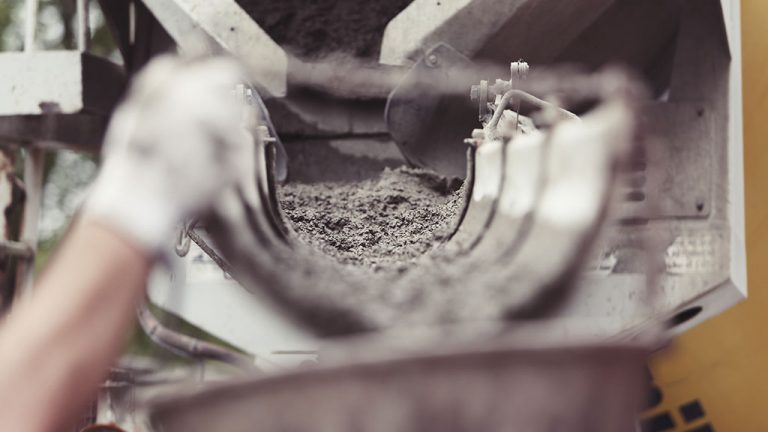Researchers have been interested in bendable concrete for decades and several forms of it have been developed with varying degrees of success.
Conventional concrete is relatively brittle and its tensile strength is typically only about one-10th of its compressive strength. That’s why rebar is used. And for some specialized uses, people have been turning more and more to reinforcing with small, randomly distributed fibres. The idea is that they will increase the energy absorption capacity and toughness of the concrete. But it also increases the tensile and flexural strength.
Polymer fibres have been used. So have steel or carbon fibres. Now though, a new bendable concrete has been developed by a research team at the Nanyang Technological University (NTU) in Singapore.
The team calls its material ConFlexPave. It’s bendable, and, the team says, longer lasting than regular concrete.
The university’s Chu Jian says he foresees using the new material to greatly reduce the thickness and weight of precast pavement slabs. Roads could be paved with the slabs, he says, and when a slab does break, or eventually just wears out, it could simply be lifted out of the roadway and a new slab dropped into place.
ConFlexPave is engineered to have some hard materials mixed with polymer microfibers that are thinner than a human hair. The mixture allows the concrete to flex and bend under tension. It also enhances skid resistance.
The key breakthrough, says Yang En-Hua, the lead researcher, was understanding how the components of the materials interact with one another mechanically on a microscopic level.
"With detailed understanding, we can then deliberately select ingredients and engineer the tailoring of components, so our final material can fulfill specific requirements needed for road and pavement applications," he says.
ConFlexPave has been successfully tested as small slabs, about the size of a tablet computer. More testing has to be done and the test slabs scaled up during the next three years. In the course of that work, some questions might arise.
For example, how does one go about preparing a subgrade for the new material? And how will one actually install precast slabs on grade? And is the likelihood of differential curling at the joints likely to provide a challenge? But these are engineering problems.
The work of the NTU Singapore team falls into a new research category called Engineered Cementitious Composites, or ECCs, which are easily moulded, mortar-based composites reinforced with specially selected short random fibres. ECC has a strain capacity in the range of three to seven per cent, compared to one-100th of one per cent for concrete made with ordinary Portland cement. That means ECCs act more like a ductile metal than a brittle glass, which is how Portland cement concretes act.
ECCs, unlike common fibre-reinforced concrete, form a family of micromechanically designed material. As long as a cementitious material is designed and developed based on micromechanics in order to feature a high degree of tensile ductility, it can be called an ECC.
ECC looks much like Portland cement-based concretes, except that it can bend under strain. Research groups scattered around the world are working on ECCs, including teams in places like the University of Michigan and Stanford U in the United States, Delft University of Technology in the Netherlands, the University of Tokyo, and of course, NTU Singapore.
Concrete is one of the oldest and most commonly used construction materials in the world. It dates back 3,000 years or more. Reinforced concrete was invented in 1849 by a French gardener named Joseph Monier. He was unhappy with using clay to make flower pots and tubs and unreinforced concrete was too unstable. So he began tinkering with iron mesh to reinforce his flower tubs.
Now, 167 years later, people are still tinkering.
Korky Koroluk is an Ottawa-based freelance writer. Send comments to editor@dailycommercialnews.com.







Recent Comments
comments for this post are closed